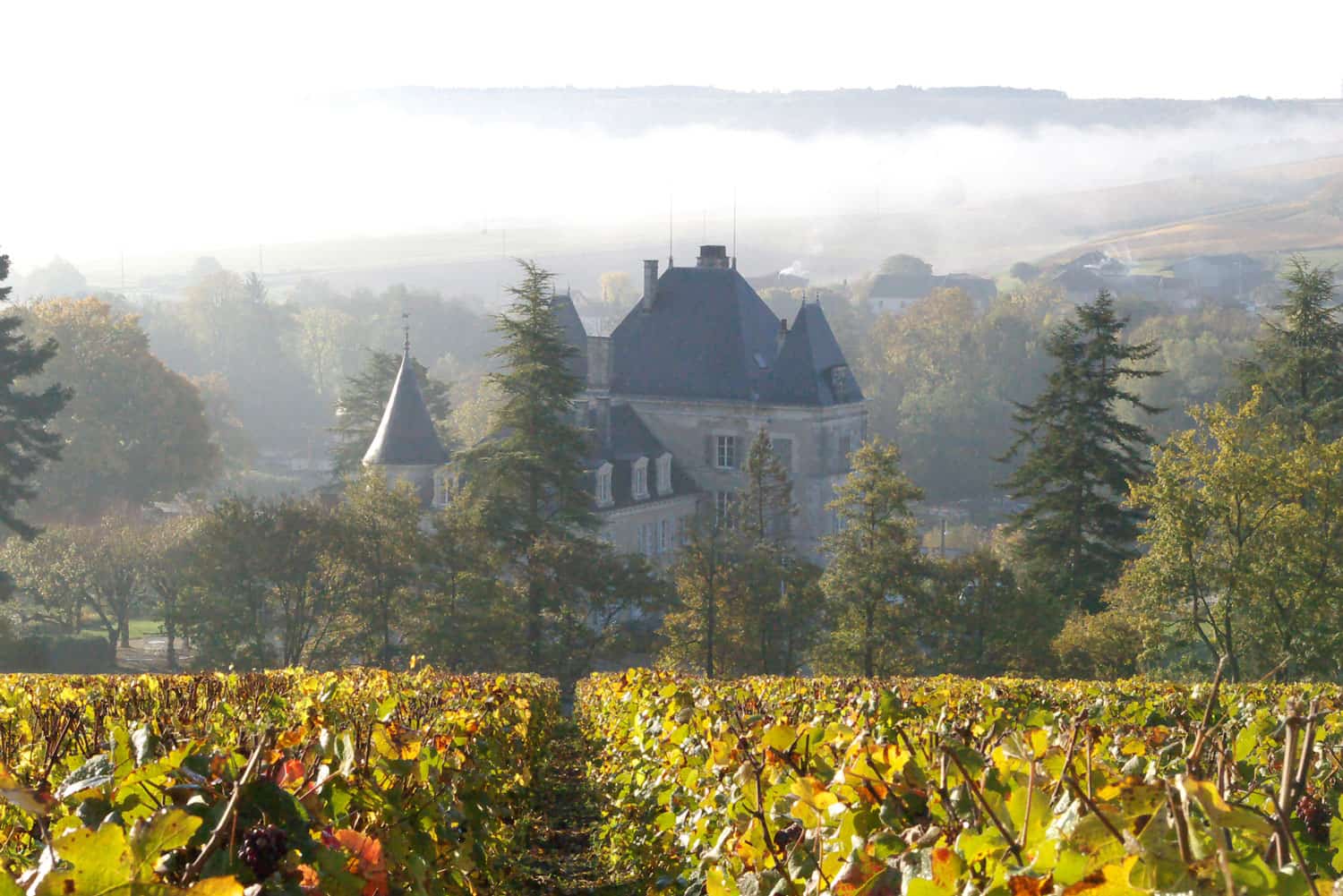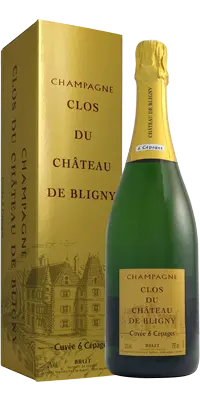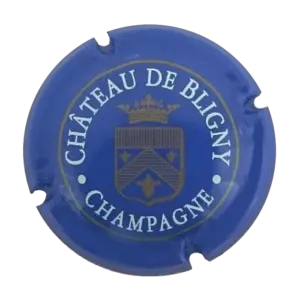Chateau de Bligny Champagne
The Château de Bligny Champagne: a legacy of champagne
The Château de Bligny Champagne is an impressive estate that rises majestically above the village of Bligny and was built on the foundations of a feudal castle. This castle once belonged to the Marquis de Dampierre, who acquired the property in 1773 to hunt wolves. The estate was extended in the 19th century with the construction of a tower and additional wings.
A castle with history
Château de Bligny Champagne is located at the foot of a hill and offers a picturesque view of the village and the Landion valley. The Landion, a small river, rises directly below the château's cellars and still supplies them with fresh water today. The imposing main gate of the castle dates back to the feudal castle demolished in 1770 and is in the style of Louis XIII. It is richly decorated with sculptural depictions of grapes and vines.
The origins of viticulture in Bligny
The vineyards of Bligny Champagne have a long tradition dating back to the Middle Ages. The Marquis de Dampierre, an important landowner and owner of the Bligny glassworks, lived in the castle and owned the surrounding vineyards. These were mainly used to produce wine for the marquis's personal use, although the wine was mostly still at the time.
Tragic events and reconstruction
In 1871, the Marquis de Dampierre suffered a heavy loss when his son was killed at the front in the war. This was a heavy blow for the family, and the decision to route the railway line through nearby Bar-sur-Aube rather than through Bligny Champagne led to the glassworks being relocated to Bar. In addition, the infestation of phylloxera brought viticulture in Bligny to a virtual standstill.
The Renaissance under Baron de Cachard
Reconstruction began in the early 19th century when the castle became the property of Baron de Cachard. Louis XVIII raised him to the rank of nobility and awarded him the title of baron. Baron de Cachard recognised the potential of the region and decided to plant a large vineyard. He also acquired the vineyards of the former priory of Sainte Eulalie, which had been founded around the year 1000. The vineyards he planted and purchased now form the Château de Bligny Champagne estate. His endeavours earned him the nickname "Gentleman Wine-maker".
The winery in the 20th century
In 1930, the vineyards of Château de Bligny covered 44 hectares. After the Second World War, a gentleman from Tours, Mr Lefèvre, bought the estate in order to expand his range to include champagne. However, his plans were never fully realised and the estate was divided up. In 1952, the Lorin family acquired the vineyards in several plots and replanted them in 1954.
Modern developments and rebirth
In recent decades, Château de Bligny Champagne has undergone a remarkable rebirth, made possible by substantial investment in the production facilities. The château itself has been lovingly restored and has been 1999 open to the public. Visitors can tour the historic property, which represents an important architectural and viticultural heritage. The dining and reception rooms have retained their decorative woodwork and painted ceilings with putti and cupids. An outstanding collection of a thousand champagne glasses, including pieces by Lalique and Daum, recalls the time when the village of Bligny was home to one of the largest crystal glassworks in the Aube until 1881.
The Château de Bligny Champagne today
Today, Château de Bligny is one of the most renowned wine estates in the Champagne region. The vineyards cover a considerable area and benefit from the region's excellent climatic and geological conditions. The estate produces a variety of champagnes that are renowned for their quality and elegance.
The house's best-known champagne is the Château de Bligny Brutan excellent representative of the brand. This champagne is characterised by its fine perlage and complex aromas of citrus fruits, white flowers and a hint of brioche. It is produced using traditional methods and matures for several years in the château's cellars before being released for sale.
Current vineyards and the headquarters
Today, the vineyards of Château de Bligny Champagne cover an area of around 30 hectares, which are mainly planted with the Pinot Noir, Chardonnay and Pinot Meunier grape varieties. These classic Champagne grape varieties thrive particularly well on the chalky soils of the region and contribute to the high quality of the wines.
The headquarters of the Château de Bligny are still located in the historic castle, which is characterised by its magnificent architecture and rich history. History characterises the castle. The château is not only a place of production, but also a centre of hospitality. Visitors can take part in guided tours of the vineyards and cellars and learn more about the art of champagne production.
Plans for the future
A special highlight for visitors will be the planned "Clos", a vineyard surrounded by walls, which is to be created on the extensive grounds of the Château de Bligny. This "Clos" will allow visitors to experience the various phases of vine growth up close and gain an in-depth insight into the work of the winegrowers.
Conclusion
Château de Bligny Champagne is a fascinating example of the combination of tradition and modernity in viticulture. With its rich history, its first-class wines and its impressive estate, it attracts wine lovers from all over the world. Its commitment to quality and the preservation of its cultural heritage make Château de Bligny Champagne an outstanding representative of the Champagne region and a must for every wine lover.
CHATEAU DE BLIGNY CHAMPAGNE
69, Avenue de Champagne
10200 BLIGNY France
Phone: (33) 3 25 27 40 11
www.champagnechateaudebligny.com











